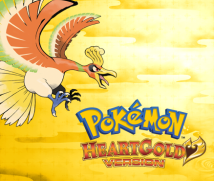1. Just Making The Last Train
For this Iwata Asks interview I am joined by Tsunekazu Ishihara-san, President and CEO of The Pokémon Company, and Shigeki Morimoto-san from Game Freak. Thank you both for coming today.
Thank you.
While the Iwata Asks series originally featured interviews with members of Nintendo staff, today we have two guests who come from different companies. At the same time, I think of Ishihara-san as an ally who I’ve fought alongside for many years. (laughs) I personally feel an extremely strong affinity with Pokémon thanks to the long period of time that I’ve been producing products together with Ishihara-san. It goes without saying that we'll be discussing the latest Pokémon titles today but I think that we should start by looking at the history of Pokémon in order to see how it connects to HeartGold Version and SoulSilver Version.
Okay.
I’d like to begin with you, if I may, Ishihara-san. You're President and CEO of The Pokémon Company1, as well as being chairman of Creatures Inc.2 … 1The Pokémon Company was established in 2000 and, in addition to managing the Pokémon brand, it runs six Pokémon Centers around Japan. 2Creatures Inc. was established in 1995. In addition to developing Pokémon video games and playing cards, it has made games such as No No No Puzzle Chailian for the Game Boy Advance and ‘Walk with me! Do you know your walking routine?’ for Nintendo DS.
Well, that’s true now, but when the first Pokémon project began, I was a producer working on the development of Pokémon Red and Green4 alongside Game Freak3. 3Game Freak, Inc. was founded in 1989 and develops video games including titles in the Pokémon series. 4Red and Green refer to and , the first titles in the Pokémon series. They were released for the Game Boy in Japan on 27th February 1996. They were later released worldwide as Red and Blue.
And how about you, Morimoto-san?
My name is Morimoto and I work for Game Freak. I was the director on the latest titles, whereas I was involved in the development of Red and Green as a programmer.
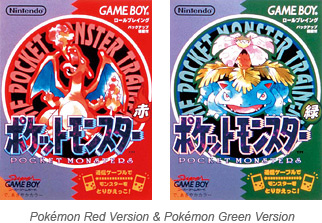
Now, planning for Pokémon began in…
It was 1990.
Red and Green were released six years later, in February 1996, which means they had an incredibly long development period.
Yes, they really did. (laughs wryly)
During Pokémon’s extended development period, I tried to stay abreast of what you were doing as much as possible. Then when Red and Green were released, it was such a quiet, understated start that it was impossible to imagine the way they would go on to explode in popularity.
That’s right. We originally completed the titles in October of the year prior to their release and wanted to release them quickly. But we missed the end of year sales season and finally released the games at the end of February of the following year – the very worst time of year to release games! (laughs)
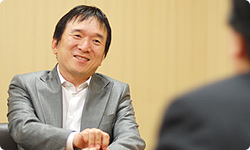
What’s more, at that time there was this slight sense in the air that the Game Boy5 might have reached the end of its shelf life, wasn’t there? 5The Game Boy was a handheld console with a monochrome screen released in Japan in April 1989. Other consoles in the Game Boy line included the Game Boy Pocket released in 1996, the Game Boy Light and Game Boy Color released in 1998 and the Game Boy Advance released in 2001.
That's why I had this feeling that perhaps we were going to miss the last train. (laughs) After all, we’d dragged it out until the very end of the console’s lifespan.
Well, you did somehow manage to make that last train! (laughs)
Somehow we made it! (laughs) When this project originally began, the concept was that we were developing software for a new platform. Satoshi Tajiri-san6 set up Game Freak in 1989… 6Satoshi Tajiri is the creator of the Pokémon series and the president of Game Freak.
Which was the same time as the release of the Game Boy.
That's why it was originally conceived as a game that would be developed for this new hardware. Then there were substantial delays in completing the title… Still, as the producer, when I saw the content of Red and Green, my personal feeling was that of all the titles I had experience of, that I had played or worked on as a producer, this was of the very highest calibre. That is to say, I was confident that this was streets ahead of the crowd in terms of sheer enjoyment. But with the release date being when it was, I had considerable concerns about the title at first.
I was involved in setting up Creatures Inc. and I remember sitting next to you, Ishihara-san, when you were deciding on the initial number of units to be shipped.
That’s right, you were! (laughs)
I recall that the initial number of units to be shipped was smaller than I’d expected… But even so, I had quite high expectations. With that number of units, I imagined that they'd fly out of the shops and that stock would run dry very quickly. But sadly, that’s wasn’t to be…
I remember looking at the weekly sales figures and feeling that we were just hovering around the edges of the top ten.
So at the outset, no one could have predicted that Pokémon would end up enjoying such worldwide popularity.
It really was a quiet start.
But in spite of that sluggish start, things ended up turning around significantly. What do you attribute that to?
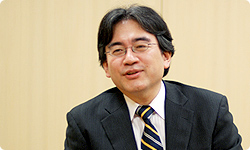
I think one reason is the power of word of mouth. In 1996, people weren't writing their own Internet blogs, but word steadily spread about how much fun Pokémon was. In addition, I strongly felt that the power of the media, centred around CoroCoro Comic7, served to accelerate the growth in Pokémon’s popularity. Finally, there was also the small matter of Mew, the Pokémon that Morimoto-san contrived as a kind of prank... 7CoroCoro Comic is a monthly manga magazine aimed at primary school students first published in 1977 by Shogakukan. In addition to manga comic strips, it also features articles on hobbies and video games.
Well, I’m not sure if “contrived” is exactly the right word… (laughs wryly)
There’s no denying that Mew’s existence played an extremely significant role…
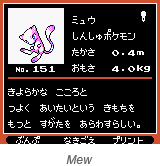
We put Mew in right at the very end. The cartridge was really full and there wasn’t room for much more on there. Then the debug features which weren't going to be included in the final version of the game were removed, creating a miniscule 300 bytes of free space. So we thought that we could slot Mew in there. What we did would be unthinkable nowadays!
This is in spite of being told after debug ended that you weren’t to tamper with even a single bit! (laughs wryly)
What’s the point of going through all the trouble of the debug process if you’re going to go and fiddle with the game afterwards…? I’d venture that this all came from Morimoto-san’s mischievous nature.
Well, it was a prank that everyone right up to Tajiri-san was in on. But even though Mew was in there…
…It wasn't actually supposed to appear in the game, right?
Right. Unless we could think about any good opportunity to do so, the existence of Mew wouldn’t have been revealed to the public. It was left in there in case it was suitable for some post-launch activity. But if there wasn’t anyone among ourselves who wanted to use it, I thought it would be fine to just leave it as it was.
Mew could very well have ended up never appearing in the game.
Right. But then due to an unforeseen bug, Mew ended up appearing in some players’ games. It looked like we planned all of this, but that wasn’t the case. So although it caused all sorts of problems to many concerned, fortunately enough it ended up having a positive effect.
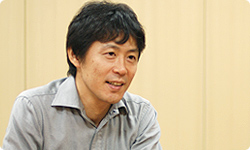
You can never predict how things are going to go, can you?
You really can’t.
That’s how the “Legendary Pokémon Offer”8 came about. 8The “Legendary Pokémon Offer” was announced in the April 1996 edition of CoroCoro Comic. Twenty winners would be selected who could send their game cartridge in so that the Mew data would be uploaded onto it. There were approximately 78,000 entrants.
Right.
There was a really incredible response to CoroCoro Comic’s announcement of the Mew offer. I feel that’s really when things turned round for Pokémon.
I believe so too. The monthly sales we’d had up to then began to be equalled by weekly sales, before increasing to become three then four times larger.
I remember feeling that I’d never really witnessed a game selling like that before.
By the time it ranked number one in weekly sales, more than a year and a half had gone by since the game was first released.
It’s like the way traditional enka ballads explode in popularity only about a year and a half after they've been released. (laughs) (Editor’s note: Enkas are melodramatic Japanese popular songs depicting the emotions and experience of Japanese people, with its distinctive singing style using tremolo.)
That’s exactly what it was like! (laughs)
